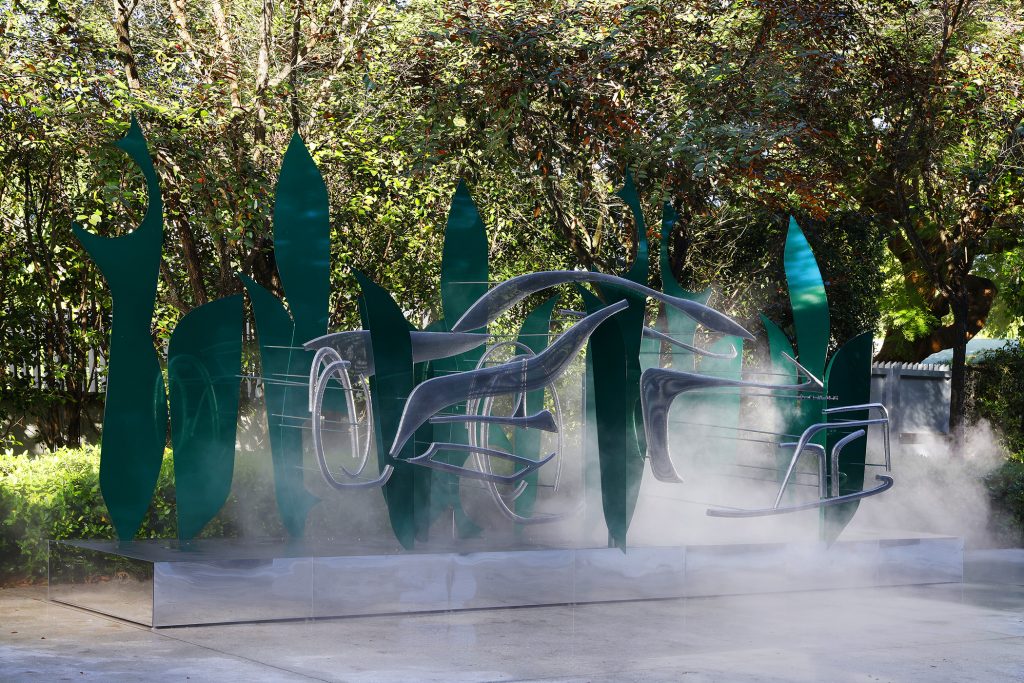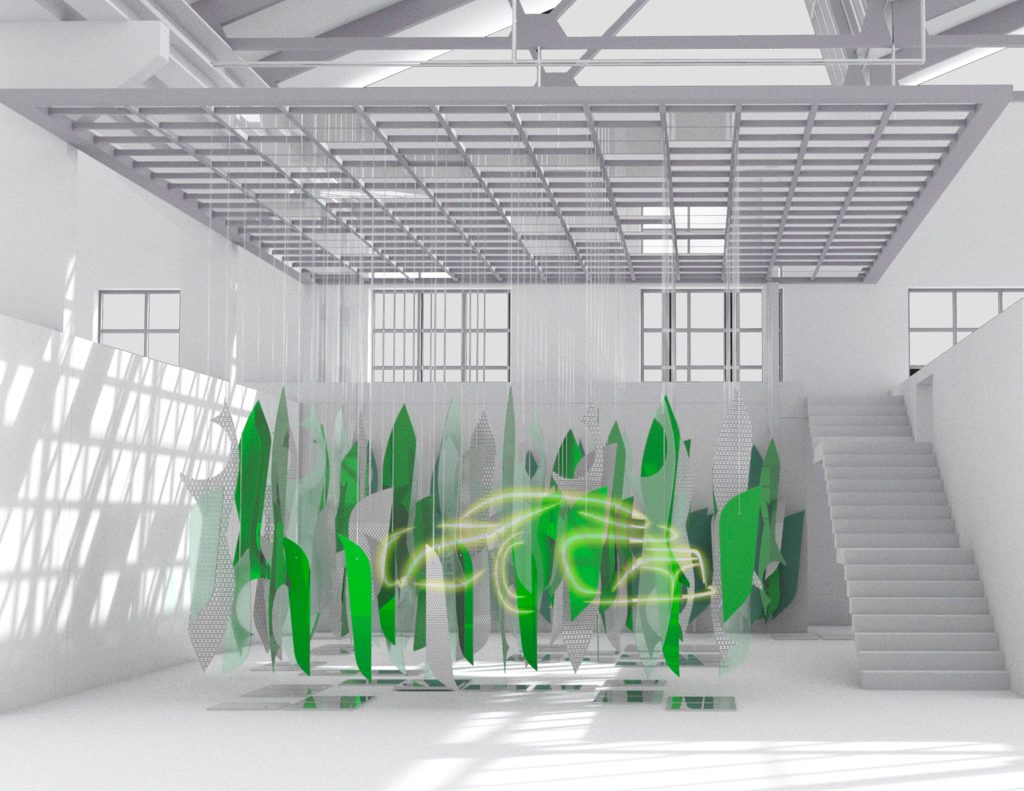Our Exclusive Look Behind Lexus + Architect Germane Barnes’ Immersive Installation at DesignMiami/
An exhibition fostering numerous collaborations with the next generation of designers, embodying the concept of an electrified future

Lexus is returning as a DesignMiami/ sponsor for 2021’s Miami Art Week, and for the first time they stayed local and teamed up with the principal architect at Studio Barnes and assistant professor at the University of Miami School of Architecture (who specializes in social and political implications of architecture), Germane Barnes. Together, the luxury automotive brand and artist—along with Barnes’ students, University of Miami’s Responsive Architecture and Design (RAD) Lab and Portland-based fabricators Matchless—are creating an immersive installation (on view 1-5 December 2021) that realizes a vision for an electrified future, inspired by the Lexus LF-Z concept car.

When Barnes was first approached to pitch a conceptual installation for Lexus, he did not hesitate. “Every year, DesignMiami/ does an installation in front of the building with big architecture and the installation on the inside,” Barnes tells us. “And of those years, we never had someone from the University of Miami be selected or be a part of that. So, when [Lexus] said I had the opportunity to, I absolutely jumped at it.” Almost immediately, Barnes began working on the project with an innate desire to extend that opportunity to others, specifically University of Miami RAD Lab’s supervisor Indrit Alushani and their collective students whose names will be featured right alongside theirs.
It was a partnership that just made sense. “Literally everything they do in the RAD Lab is around tech,” Barnes continues. “Everything you see here is smart city technology, integrating these things into our future. My lab focuses on the social and political aspects of architecture from a human approach.” For an exhibition embodying the carbon-neutral, future-focused ethos of the LF-Z, this serendipitous collaboration did more than bring the project to life—it also undergirded its mission, which, as Alushani tells us, “is really to bring people together.”
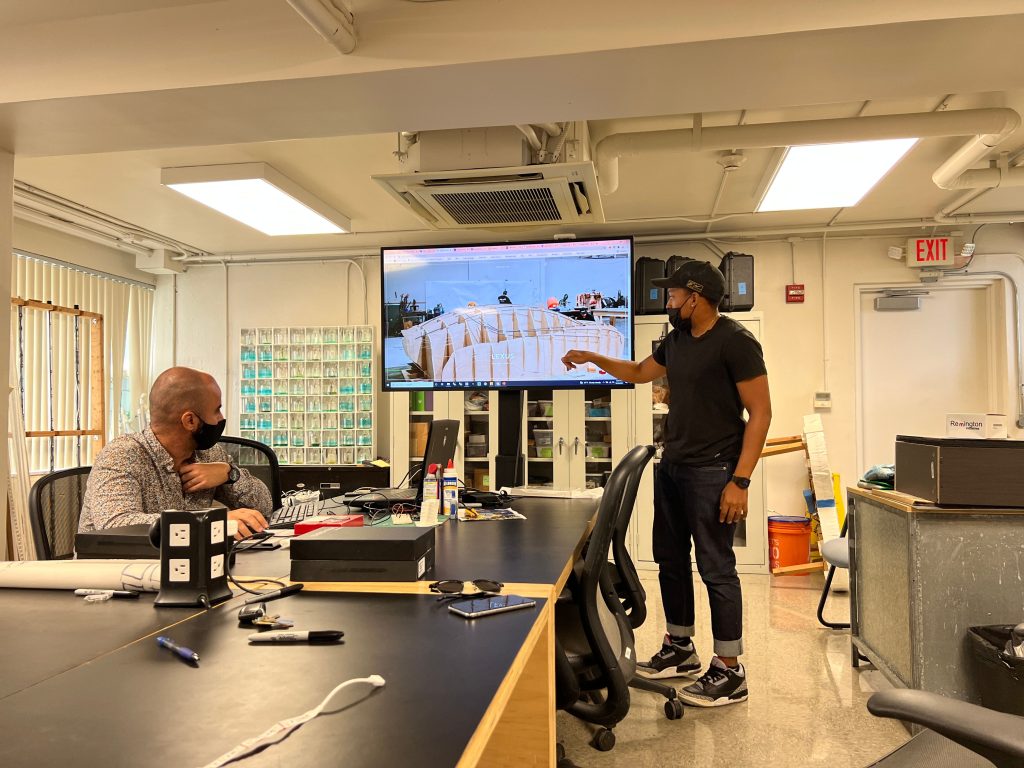
“We felt compelled to do something that would be interactive and could get a lot more people involved, especially with COVID,” Alushani explains. “We thought: how can we do this globally?” The question led him to LED light strips that, through the use of cutting-edge Arduino microcontrollers, respond to users on social media to translate physically into the space. Making the exhibit accessible to other designers and spectators was an integral part of the show even in its early stages. “We wanted to stay true to Lexus’ human approach—human globally, internationally and intersectionally,” Barnes adds.

Putting people first also manifests through the exhibition’s addition of furniture that Studio Barnes designed, as well as some by his students at the university. This component—comprised of seating, a table of elements and swings, electrified with more LEDs—was built with visitors’ needs in mind. “The most important part is to give people the opportunity to sit, relax, take a break and catch a breath,” says Barnes. “It’s something that’s not typically offered at the booth. It’s a reinforcement of electricity, of global networks of interaction and of relaxation.”
Material-wise, the wood and concrete seating takes its cues from LF-Z’s carbon neutrality, offering alternatives to harmful plastics. Barnes says he explored “how to use sustainable materials or things that don’t have a very large carbon footprint” and—with the research from the materials lab at the university—found concrete to be a more ecological-resistant option. He explains, “Concrete is more water-resilient and we’re in a place where saltwater destroys things after designing.”

While the globally connected lights support the installation and its seating, the exhibition’s showstopper is the one-to-one scaled, wireframe vehicle, constructed out of 3/8-thick steel. Exemplifying architectural prowess, this physical installation accentuates all of the LF-Z’s details, celebrating its silhouette and sustainability with an illuminated Lexus logo that also reads “Electrify.” This wireframe version of a car is a study in master craftsmanship and illuminates as guests walk by. “It’s literally seeing through the car, but you see every single important detail. There’s an important line that gives you the framework, but it’s completely invisible,” Barnes describes. To make the wireframe and swings he enlisted the help of Matchless, who were recommended by a friend and add another fateful collaboration within a ripple of partnerships.
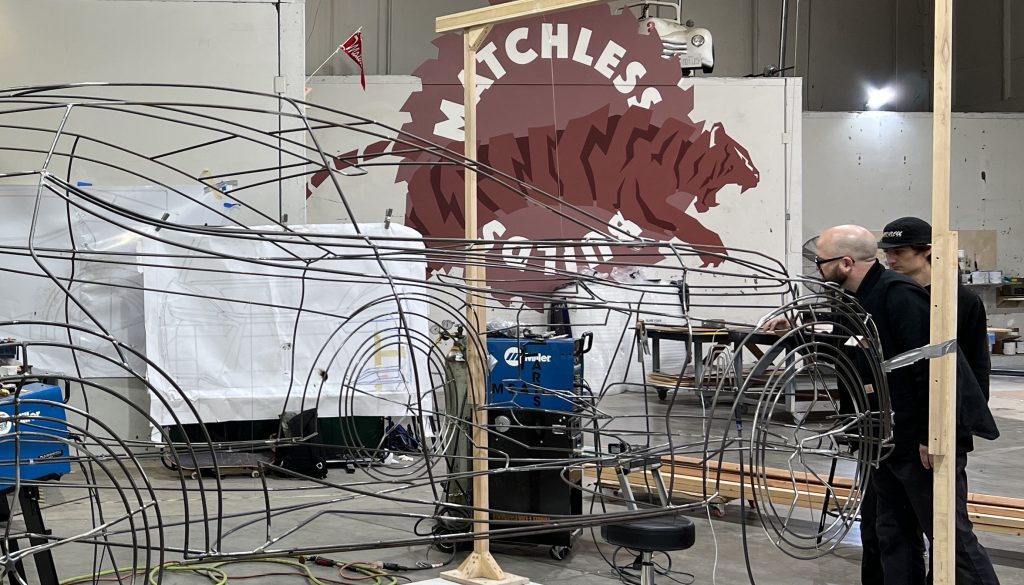
Even before they got the green light, the team at Matchless began building the installation’s jig, which was done by the time Barnes told them their plans were approved. Matchless builders Seamus Hartman and Shane Fuller tell us they “were simply too excited to wait.” Undeterred by the undertaking and its short time constraint, the fabricators were thrilled to extend their abilities to something larger than their typical oeuvre. “It’s crazy, because this is the biggest thing. I don’t put a lot of weight on that, but I would’ve never been able to think about being in this situation. It’s like this opportunity is even giving more. We get to go to Miami and help put it in there and see its final spot,” says Hartman.
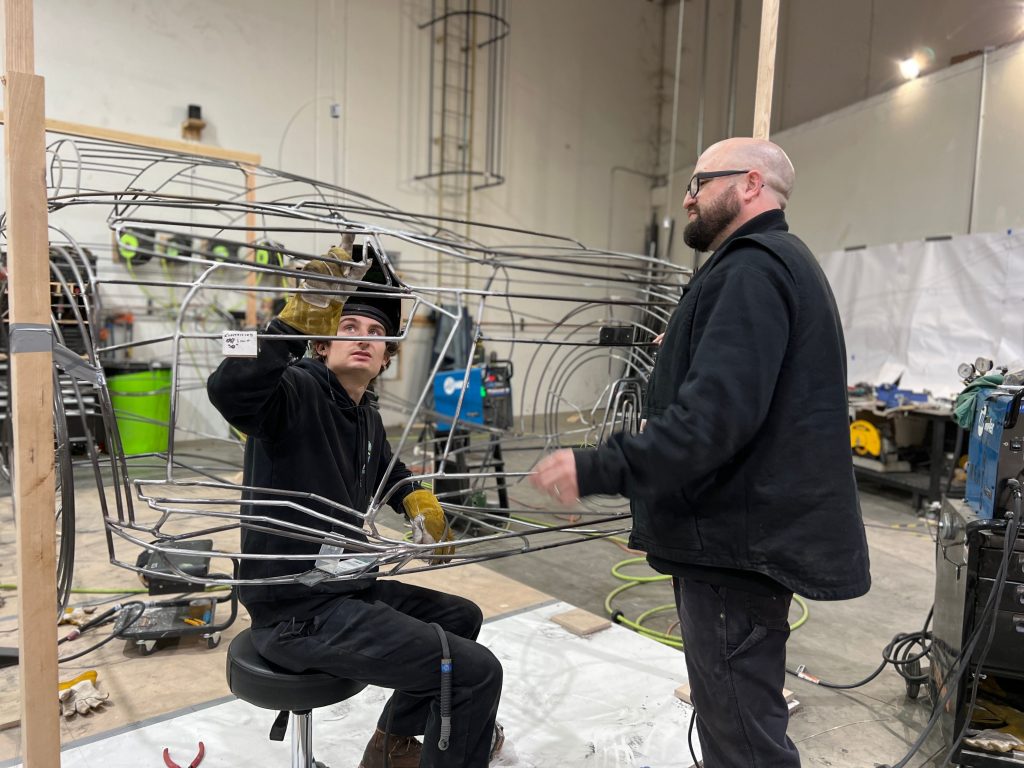
Throughout the construction process, the pair were pleasantly surprised to find how much freedom they had to create in such a collaborative project. “As soon as I started, it was never like someone coming up, saying we have a bunch of meetings and people need visuals,” adds Fuller. Instead, Matchless got to experience Lexus’ true dedication to craft, adding their skills alongside the next generation of designers featured in this multi-disciplinary installation—a fitting union given Lexus’ focus on ushering in a new era of human-centric, electric automation.
“We’re thrilled to bring this incredible project from Germane Barnes and the University of Miami to Design Miami/ in our fourth year of partnership with the fair. As we look towards next generation design, this project has given us a chance to highlight Lexus’ commitment to electrification while working closely with the students at UMiami who are incredibly talented and truly represent the future of design and innovation,” says Brian Bolain, Lexus’ Global Head of Marketing. We’re excited by Lexus’ decision to partner with a local designer for their installation, and their ongoing support of the artisans they collaborate with. Visitors to DesignMiami/ can view the installation from 1-5 December 2021.
Hero image courtesy of Lexus

